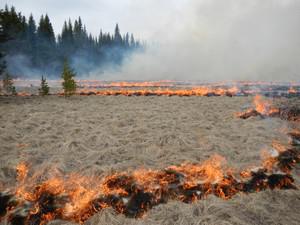WildfiresPlanned burns can reduce wildfire risks, but expanding use of ‘good fire’ isn’t easy
Prescribed burns can decrease the potential for some of the large, severe fires that have affected western states in recent years. As scholars of U.S. forest policy, collaborative environmental management and social-ecological systems, we see them as a management tool that deserves much wider attention.

Planned burn at Glacier National Park // Source: nps.gov
As spring settles in across the United States, western states are already preparing for summer and wildfire season. And although it may seem counter-intuitive, some of the most urgent conversations are about getting more fire onto the landscape. Winter and spring, before conditions become too hot and dry, are common times for conducting planned and controlled burns designed to reduce wildfire hazard. Fire managers intentionally ignite fires within a predetermined area to burn brush, smaller trees and other plant matter.
Prescribed burns can decrease the potential for some of the large, severe fires that have affected western states in recent years. As scholars of U.S. forest policy, collaborative environmental management and social-ecological systems, we see them as a management tool that deserves much wider attention.
Forests need ‘good fire’
Forests across much of North America need fire to maintain healthy structures and watershed conditions and support biodiversity. For centuries, Native Americans deliberately set fires to facilitate hunting, protect communities and foster plants needed for food and fiber.
But starting around the turn of the 20th century, European Americans began trying to suppress most fires and stopped prescribed burning. The exception was the Southeast, where forest managers and private landowners have consistently used prescribed burns to clear underbrush and improve wildlife habitat.
Suppressing wildfires allows dead and living plant matter to accumulate. This harms forests by reducing nutrient recycling and overall plant diversity. It also creates more uniform landscapes with higher fuel loads, making forests prone to larger and more severe fires.
Today many forested landscapes in western states have a “fire debt.” Humans have prevented normal levels of fire from occurring, and the bill has come due. Increasingly severe weather conditions and longer fire seasons due to climate change are making fire management problems more pressing today than they were just a few decades ago. And the problem will only get worse.
